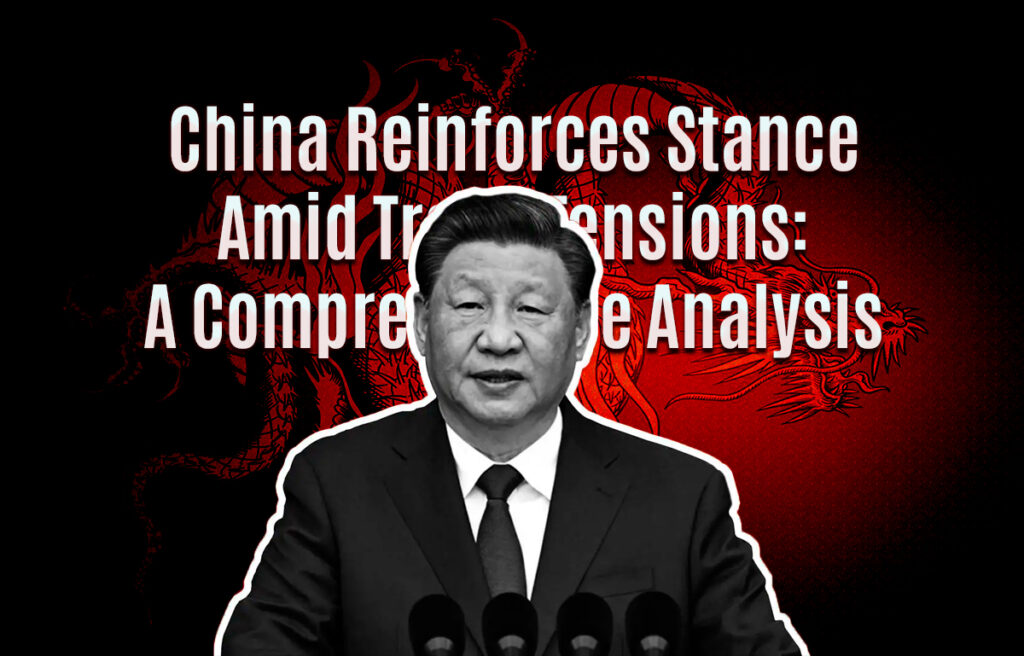Introduction
In early 2025, trade tensions between China and the United States have escalated significantly, marked by a series of tit-for-tat tariff increases and aggressive rhetoric. The U.S. has imposed steep tariffs on Chinese goods, prompting China to retaliate with its own measures and a robust propaganda campaign. This article delves into the origins of the current trade dispute, the economic and political ramifications, and the broader implications for global trade dynamics.
The Escalation of Tariffs
In April 2025, the U.S. administration, under President Donald Trump, implemented a 145% tariff on Chinese imports, citing unfair trade practices and national security concerns. This move significantly disrupted U.S. economic activity, leading to a sharp slowdown in growth and a decline in consumer confidence. In response, China imposed a 125% tariff on U.S. goods, further straining bilateral trade relations. AP NewsNew York Post
China’s Propaganda Offensive
To counter the U.S. narrative, China’s Ministry of Foreign Affairs released an AI-generated propaganda video portraying the U.S. as a declining power and urging global solidarity against American “bullying.” The video, featuring dramatic imagery and English voice-over, was widely disseminated on social media platforms, including TikTok, where it was accompanied by clips satirizing U.S. infrastructure. New York Post
Economic Impact on Global Trade
The escalating tariffs have had a profound impact on global trade. The Port of Los Angeles reported a 35% drop in cargo volumes from Asia, particularly from China, due to the newly imposed U.S. tariffs. Major American retailers have halted shipments from China, leading to concerns over supply shortages and rising consumer prices. Business Insider+1Financial Times+1
Financial institutions are also feeling the strain. HSBC has set aside $876 million for expected credit losses in Q1 2025, attributing $150 million to the deteriorating economic outlook tied to global trade tensions. Latest news & breaking headlines
China’s Strategic Economic Policies
Amid the trade tensions, China is reinforcing its commitment to economic self-reliance and technological advancement. The “Made in China 2025” initiative aims to upgrade the manufacturing sector, focusing on high-tech industries such as semiconductors, electric vehicles, and biotechnology. Despite U.S. efforts to stifle China’s technological rise, the initiative has been largely successful, with China achieving global leadership in several critical technologies. Wikipedia
Additionally, China’s “dual circulation” strategy emphasizes the importance of domestic consumption while remaining open to international trade. This approach seeks to reduce dependence on foreign markets and enhance economic resilience. Wikipedia
Diplomatic Overtures and Global Implications
Despite the heightened tensions, China has expressed willingness to engage in trade talks with the U.S., stating that the “door for talks is wide open.” However, Chinese officials have emphasized that negotiations must be based on mutual respect and equality, rejecting any form of coercion. The New Indian Express
The ongoing trade dispute has broader implications for global trade dynamics. Countries are increasingly seeking to diversify their trade partnerships and reduce reliance on the U.S. and China. This shift could lead to the reconfiguration of global supply chains and the emergence of new trade alliances.
Conclusion
The intensifying trade tensions between China and the U.S. reflect deeper geopolitical rivalries and differing visions for global economic governance. As both nations reinforce their stances, the potential for a prolonged trade conflict looms, with significant implications for the global economy. Navigating this complex landscape will require strategic diplomacy, economic adaptability, and a commitment to multilateral cooperation.
Sources:







